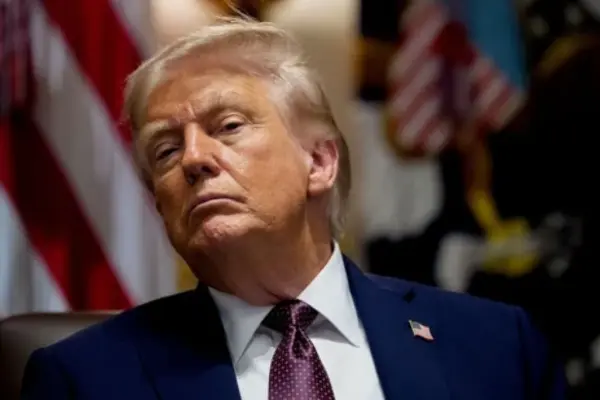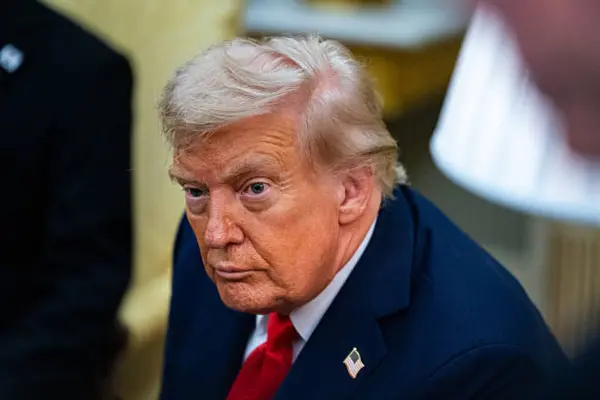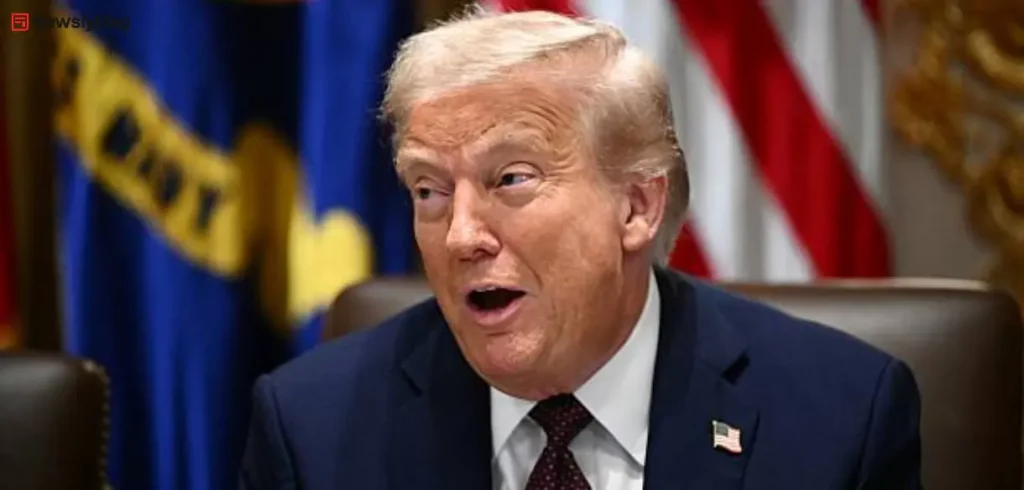Donald Trump’s decision to raise tariffs has sparked heated debate at home and abroad. While critics see it as reckless and costly, Trump and his advisers argue that tariffs are part of a broader strategy. one that mixes economics, politics, and national security.
Fixing the Trade Deficit
At the heart of Trump’s tariff push is his long-standing belief that America has been treated unfairly in global trade. He points to the U.S. trade deficit as proof that other countries have taken advantage of the U.S. By raising tariffs, Trump says he is “leveling the playing field” and forcing trading partners to stop flooding the U.S. with cheap imports.
Negotiation by Pressure
Trump doesn’t just see tariffs as taxes—he sees them as leverage. His style has always been to threaten first, then negotiate. By hitting trading partners with new tariffs, he pressures them to come back to the table for better deals. It’s a high-stakes bargaining tactic that has worked at times, though it has also sparked retaliation.
Also Read :- Top 10 Famous Hill Destinations in the World
Boosting U.S. Industry
Another key goal is reviving American manufacturing. By making imports more expensive, tariffs are meant to push businesses to bring production back home. Industries like steel, aluminum, and semiconductors are seen as vital to both jobs and national security. Supporters argue this “Made in America” push will strengthen the economy in the long run.
A National Security Tool
Tariffs aren’t just about economics—they’re also about geopolitics. Trump has linked trade directly to national security, using tariffs to pressure rivals like China and to push allies into closer cooperation with the U.S. In his view, protecting supply chains and keeping critical industries inside America’s borders is just as important as military strength.
Backlash at Home and Abroad
But the approach carries risks. Tariffs raise costs for U.S. businesses and consumers, leading to higher prices. Some industries that rely on imported parts have been hit hard. Trading partners, from China to Canada, have responded with their own tariffs, sparking trade disputes. Polls also show most voters dislike tariffs, especially as they feel the pinch in everyday prices.
Legal and Political Uncertainty
Trump’s heavy use of emergency powers to impose tariffs has also raised legal challenges. Courts are now reviewing whether a president has such broad authority. Politically, the backlash could weaken Republican support in key swing states if prices keep climbing.
Also Read :- 42 Dugg Net Worth
Key Benefits of Trump’s Raised Tariffs for the U.S. Economy

Protecting American Industries – Higher tariffs make imported goods more expensive, encouraging consumers and businesses to buy more from U.S.-based manufacturers. This protects domestic industries like steel, aluminum, and manufacturing.
Job Creation – By supporting local industries, tariffs can help preserve and potentially create jobs for American workers in sectors that might otherwise struggle against cheap imports.
Reducing Trade Deficits – Tariffs can discourage excessive imports, helping to narrow the trade gap between the U.S. and countries with whom America runs large deficits.
Boosting Government Revenue – Tariffs generate income for the federal government, which can be used for infrastructure, social programs, or reducing the national debt.
Strengthening Negotiation Power – Tariffs can serve as leverage in trade negotiations, pushing other countries to lower their own tariffs or open their markets more fairly to U.S. goods.
Encouraging Domestic Investment – When imports become costlier, businesses may be more inclined to invest in U.S. factories, research, and innovation to remain competitive.
National Security – Protecting critical industries (like defense, energy, or technology) from foreign dependence helps ensure that the U.S. maintains control over essential supplies.
Promoting Fair Trade – Tariffs can counter practices like currency manipulation, dumping, or government subsidies by foreign competitors, creating a more level playing field for American businesses.
Here are some potential losses of Trump raising tariffs for the U.S.

- Higher Consumer Prices – Tariffs increase the cost of imported goods, which can lead to higher prices for everyday items like electronics, clothing, and household products.
- Strain on Farmers – Other countries often retaliate with their own tariffs, hurting U.S. farmers who rely on exports of soybeans, corn, pork, and other agricultural products.
- Impact on Small Businesses – Many small businesses depend on affordable imported materials or products. Tariffs can raise their costs, making it harder to compete.
- Job Losses in Some Sectors – While tariffs may protect certain industries, others (such as retail or export-driven sectors) may lose jobs due to reduced demand or higher input costs.
- Slower Economic Growth – Trade tensions and higher costs can reduce overall economic growth by discouraging investment and limiting international trade.
- Global Supply Chain Disruptions – Many U.S. companies rely on global supply chains. Tariffs can raise production costs and delay manufacturing by making imported parts more expensive.
- Risk of Trade Wars – Retaliation from trading partners can escalate into prolonged trade wars, damaging long-term trade relationships and market stability.
- Burden on Low-Income Families – Since low-income households spend a larger share of their income on goods, they are hit harder by rising prices caused by tariffs.
Also Read :- 50 Cent Net Worth
Affected Countries
- More than 60 countries
As of early August 2025, Trump’s higher “reciprocal” tariffs took effect on imports from over 60 countries - Nearly 70 countries and territories
The Guardian reports that “reciprocal” tariffs ranging from 10% to 41% impacted imports “from nearly 70 countries and territories.”
Examples of Affected Nations & Regions
- Asia & Pacific: India (now facing 50%), China, Vietnam, Japan, South Korea, Taiwan, Indonesia, Malaysia, Thailand, etc.
- Europe: European Union (15%), UK (10%), Switzerland (39%), Serbia, Norway, Bosnia & Herzegovina, etc.
- North & South America: Canada (35%), Mexico, Brazil (up to 50%), among others.
- Africa & Middle East: Countries like Algeria, Botswana, Ghana, South Africa, Iraq, Syria, Kazakhstan, etc., were also included.
Additional Tariff Measures Beyond Country-Specific Lists
Also Read :- Aaron Boone Net Worth 2025
- Blanket tariffs
On April 2, 2025, Trump imposed a 10% base tariff on all imports into the U.S., with additional reciprocal tariffs reaching up to 25% for specific countries. - Oil-related sanctions
A 25% tariff applies to all goods imported from any country that imports Venezuelan oil, regardless of other considerations.


